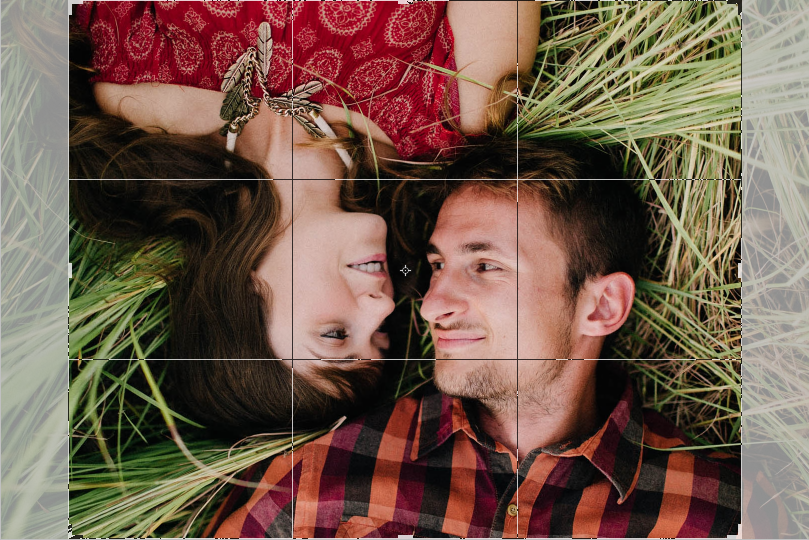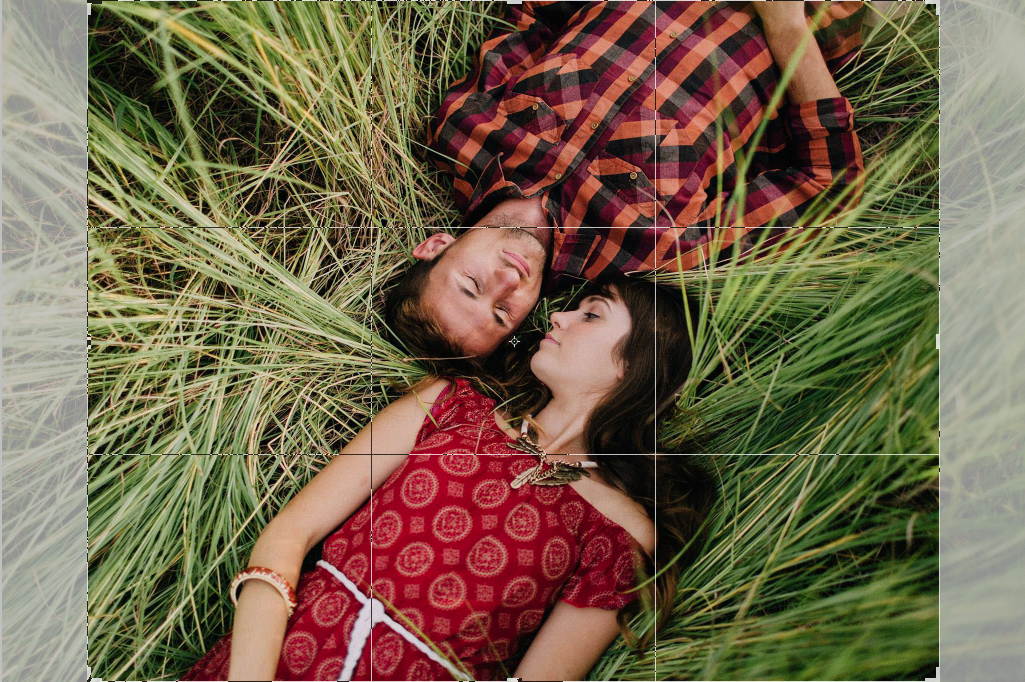Before setting up your price lists in Workspace you need to know what products you're going to sell and in what size. To do that it pays to understand the aspect ratio of the files you're uploading.
The first part of this article describes why aspect ratio is a problem. The second explains what to do about it, including how to choose suitable print and product sizes.
What is "aspect ratio" and why can it be a problem?
The aspect ratio of an image is the ratio of its width to its height. For example, 6x4 and 12x8 prints have an aspect ratio of 3:2 (or 1.5 to 1), whereas 12x9 and 16x12 prints are 4:3 (1.33 to 1).
Unless the aspect ratio of a print matches that of the camera image from which it is made, the printed image will be cropped.
Your customers can find this confusing.
Suppose you shoot groups, like teams and classes, but sell the images online as 10x8 prints. The prints will have an aspect ratio of 5:4 but your files an aspect ratio of 3:2. That means that if you've framed too tightly anyone on the outer edges of the group is likely to be cropped out.
It's possible to reframe and crop in Workspace, but chances are that many of your customers won’t notice, or won't understand, and any problems won’t be discovered until the prints appear in the lab after they've been printed.
Another common problem shows up in vertical portrait shots. If the photographer crops too tightly in the camera, heads (and/or feet) may be cropped if the print is a different aspect ratio to the image.
Why aren’t aspect ratios all the same?
That would be helpful, and less confusing, but they're different for many reasons, good and bad.
They’re the result of traditions, artistic preferences, and habits and standards old and new that are hard to break. For example:
- Silver halide sizes are based on the width of the print stock (5", 6", 10" 12", 30" etc) which means some of the traditional sizes have odd aspect ratios (see "Other" in the tables below!)
- The aspect ratio of most modern DSLR cameras matches the negatives shot on 35mm film SLR cameras, but many early digital cameras had an aspect ratio of 4:3, which matched medium format film cameras, old computer monitors, movies and TV screens etc.
- Many smartphone cameras shoot HD format (16:9).
- Instagram has popularised square format, which was also an old film camera standard.
Here are a few examples of how a 3:2 print file will crop depending on the size ordered. The grey area shows what will be lost from the print.

The 10x8 crop on this image loses a lot of the surrounding detail. The man's shoulder and the woman's hair disappears slightly within the 10x8 crop.

Taken from slightly further back, this image loses less to the 10x8 crop. A 12x8 would lose no image at all.

The original crop of the image is close. Cropped to 10x8, two of the bridesmaids lose the back of their heads.

From further back, the groomsmen fit easily into the 10x8 frame. Note that the crop in this image has been shifted to the left, as Workspace allows you to do — make sure to check your crop before placing an order if there is an 'auto-crop' function.
What’s the solution?
1. Match the image to the print
- Either frame the photo in your viewfinder to suit the aspect ratio of the products or prints you’re going to create — so cropping won't be necessary.
- Or use products with an aspect ratio that matches the aspect ratio of the image file — so again, cropping is never necessary.
- Alternatively leave plenty of space around the subject of the image, as in our last example — so that any cropping won't matter.
2. Think of cropping as part of the creative design process
In albums, for example, images are often resized to fit onto pages, or into groups of images. Cropping is more the norm than the exception. It’s what gives you the opportunity to create visually interesting layouts, or to arrange a particular series of images on a layout for the purposes of telling a story.
Serious designers, including our team, have strong opinions about what’s acceptable. Vive la difference!
But one thing’s for certain — if you crop tightly in-camera, you’re limiting your options.
What this means for printing and products
Assuming you're shooting 3:2 aspect ratio files, print sizes that won't require cropping include 6x4, 12x8, 15x10, 18x12, 24x16, 30x20, 36x24 and so on — see the tables below.
But other popular print sizes such as 7x5 and 14x11 will always require some cropping, and the loss of part of the image.
Efficiency is very important to photographers shooting lots of images, eg at weddings, schools and balls, so if you intend to use those sizes you'll save lots of time in editing, ordering etc (and have less reprinting and complaints to deal with!) if you "frame in camera" to suit the print size.
Aspect ratio in matted prints, frames etc is more complicated. Sizes are influenced by traditions and standards old and new, as well as by factors like manufacturing constraints and design considerations. Popular framing sizes like 14x11, 20x16 and 40x30 bear no relationship to a 3:2 camera file.
For those reasons canvases and un-matted frames will always require cropping unless you choose products with a matching aspect ratio. If not, we urge you to crop the file before uploading it, and not leave it up to your customer.
However with matted frames you have some flexibility because it's the mat aperture that reveals the print, not the frame itself. For example a 14x11 frame could accommodate a matted full-frame 12x8 print, meaning no cropping.
Workspace shows you (or your customer if it's a retail sale) a preview of what the product will look like before you place your order.
Wth all that in mind, here is a list of sizes we offer in the different product ranges. Our most popular by far are our 3:2 sizes but you can of course offer others. Just bear in mind that if you upload a 3:2 file there will be cropping.
Silver Halide Print Sizes
| 3:2 |
A |
1:1 |
4:3 |
5:4 |
2:1 |
3:1 |
4:1 |
Other |
|---|---|---|---|---|---|---|---|---|
| 6x4 |
A5 |
6x6 |
5x3.75 |
10x8 |
20x10 |
30x10 |
40x10 |
7x5 |
| 7.5x5 |
A4 |
10x10 |
8x6 |
14x11 |
12x5 |
|||
| 9x6 |
A3 |
12x12 |
12x9 |
10x7 |
||||
| 12x8 |
16x12 |
11.7x8 |
||||||
| 15x10 |
12x10 |
|||||||
| 18x12 |
14x10 |
|||||||
| 16x11 |
Inkjet Print Sizes
| 3:2 |
A |
1:1 |
4:3 |
5:4 |
2:1 |
3:1 |
4:1 |
Other |
|---|---|---|---|---|---|---|---|---|
| 12x8 |
10x10 |
12x9 |
10x8 |
20x10 |
30x10 |
40x10 |
10x7 |
|
| 15x10 |
A4 |
12x12 |
16x12 |
14x11 |
30x15 |
36x12 |
12x10 |
|
| 18x12 |
A3 |
14x14 |
20x15 |
20x16 |
40x20 |
45x15 |
14x10 |
|
| 24x16 |
A2 |
24x18 |
25x20 |
50x25 |
16x11 |
|||
| 30x20 |
A1 |
20x20 |
32x24 |
30x24 |
60x30 |
24x20 |
||
| 36x24 |
A0 |
30x30 |
36x27 |
35x28 |
||||
| 45x30 |
40x30 |
40x32 |
||||||
| 60x40 |
48x36 |
50x40 |
||||||
| 52x39 |
||||||||
| 56x42 |
Canvas Sizes
| 3:2 |
A |
1:1 |
4:3 |
5:4 |
2:1 |
3:1 |
4:1 |
Other |
|---|---|---|---|---|---|---|---|---|
| 12x8 |
A4 |
10x10 |
16x12 |
10x8 |
20x10 |
30x10 |
40x10 |
10x7 |
| 18x12 |
A3 |
12x12 |
14x11 |
30x15 |
36x12 |
24x20 |
||
| 24x16 |
A2 |
14x14 |
20x16 |
40x20 |
45x15 |
|||
| 30x20 |
A1 |
16x16 |
30x24 |
50x25 |
||||
| 45x30 |
A0 |
20x20 |
60x30 |
24x20 |
||||
| 60x40 |
24x24 |
|||||||
| 30x30 |
Frame Sizes
| 3:2 |
A |
1:1 |
4:3 |
5:4 |
2:1 |
3:1 |
4:1 |
Other |
|---|---|---|---|---|---|---|---|---|
| 12x8 |
A5 |
10x10 |
16x12 |
10x8 |
20x10 |
30x10 |
40x10 |
10x7 |
| 18x12 |
A4 |
12x12 |
40x30 |
14x11 |
30x15 |
36x12 |
24x20 |
|
| 24x16 |
A3 |
14x14 |
20x16 |
40x20 |
||||
| 30x20 |
A2 |
16x16 |
||||||
| A1 |
20x20 |
|||||||
| 24x24 |
||||||||
| 30x30 |
Product availability and discounted print sizes
You may notice that we don't offer all sizes across every product range. We'd love to do so but in reality it isn't possible. For example we can't offer silver halide prints that would need to be printed on paper more than 12" wide, and we can't offer frames in sizes greater than 40x30. And of course, to keep our prices as low as possible we need to focus on running an efficient manufacturing facility, minimising waste and maintaining affordable stock levels.
We're sometimes asked why certain print sizes are more affordable than others, and there are two reasons for this, both to do with efficiency. First, we offer certain sizes at a discounted rate purely because they're big sellers and we gain efficiencies from that. Second, some print sizes require more handwork. Silver halide printing, for example, is very productive, but some sizes need to be trimmed because they don't fit the paper size.
Check out all our pricing in our Workspace price calculators and click here for the discounts we offer.
Alexandria
Comments